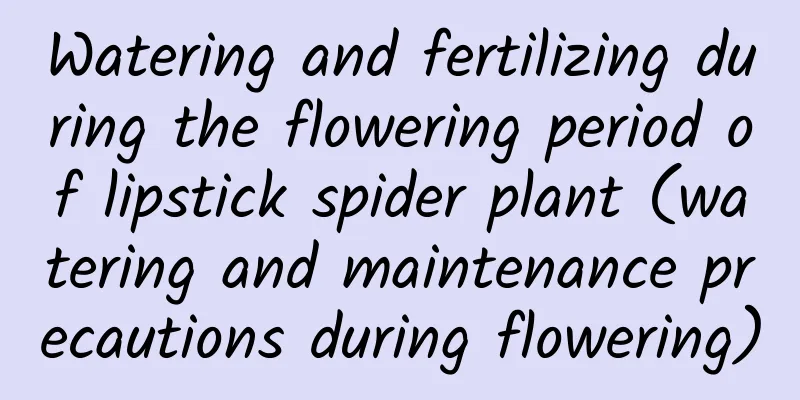When is the best time to transplant Clivia?

|
Before transplanting Clivia, be sure to choose a suitable pot for it first. Don't choose a pot that is too large, otherwise the Clivia will only grow roots but not bloom, or even leaves. This is because Clivia has a characteristic that it grows roots first during its growth process, and then it supplies nutrients to grow leaves and flowers after the roots fill the pot. Therefore, choosing a small pot can ensure that its leaves grow more and the flowers bloom well. Clivia transplanting timeThe survival rate of Clivia is highest when it is transplanted in May and June. It is best not to advance or delay the transplanting time. In this way, 2-3 months after transplanting, the seedlings should grow 2 leaves and the height will grow to about 5-6 cm. The most suitable growth temperature for Clivia is between 20-25℃. The temperature and humidity in May and June are very suitable for the growth of Clivia, allowing it to adapt to the pot quickly after transplanting. Clivia transplanting methodFirst of all, do not water the Clivia one week before transplanting it, and keep the soil at the roots in a semi-dry state. When transplanting, choose a good day with sunny weather, then dig out the Clivia, gently remove the soil at the roots, and cut off all its rotten roots and dead roots. This can stimulate the growth of new roots. Then wash the roots with clean water, place them in a cool and ventilated place to dry, and then you can transplant them into new soil. Management of Clivia after transplantingAfter repotting, the Clivia plant itself needs proper recovery. At this time, you need to water the soil in the pot thoroughly until water starts to drip out of the drainage hole, and then place it in a ventilated and shaded place for maintenance. In addition to watering, you must also remember to fertilize regularly, but you must be cautious when fertilizing in summer. When the temperature exceeds 30℃, you must stop fertilizing, otherwise it is easy to cause fertilizer damage, because the high temperature in summer will cause the Clivia to stagnate in growth, and its roots cannot absorb fertilizer at this time. |
<<: Can bayberry be propagated by cuttings?
>>: Advantages and Disadvantages of Black Buck Rose
Recommend
How to grow monkey orchid
1. Maintenance methods 1. Temperature: The temper...
Can you eat kale?
Can you eat kale? Since we often see the colorful...
Does Brazilian wood like the sun?
Brazilian wood likes the sun The rubber tree pref...
How to grow the weeping angel in summer
1. Water more In summer, water will accelerate gr...
How to propagate peony by cuttings
Cutting method Preparation before cutting First, ...
Elderly people should not grow these flowers. It is very dangerous to have one at home!
1. Euphorbia pilosa Not only is the juice of Euph...
How to prune thyme
When to prune thyme Thyme can be pruned at any ti...
How to grow copper coin grass in autumn
1. Change hydroponics to soil culture The hydropo...
What are the benefits of drinking kumquat soaked in water
1. Benefits 1. Using it to make tea can relieve d...
Cultivation methods and precautions of lucky bamboo
1. The habit of this plant (1) First, it likes to...
How to grow freshly cut green radish in water
1. Water culture method 1. Choose branches: Choos...
What fertilizer is better for Kalanchoe when its flowers have faded (What fertilizer should I use to make Kalanchoe bloom more)
First, prune the branches and remove the remainin...
Lily Bamboo | Aquatic plants suitable for living rooms
Other Names Bamboo banana Habits It likes high te...
Cultivation and pruning of jade tree
Jade plants include the common jade tree, Kusanag...
What are the cultivation methods and precautions of hibiscus?
Hibiscus cultivation method Hibiscus is a plant o...









